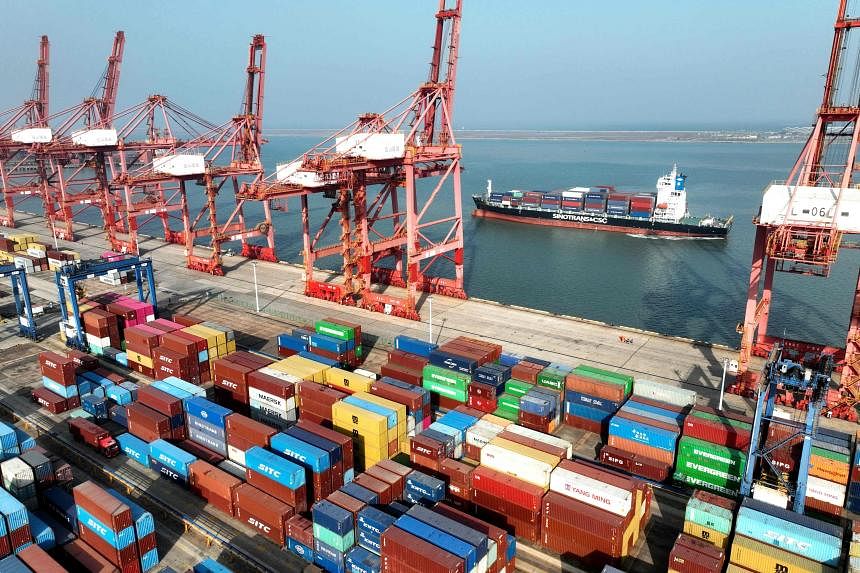SHANGHAI – China’s imports unexpectedly shrank in November from a Covid-19-hit period one year ago, dashing hopes domestic demand would rebound from a low base to spur growth in the world’s second-largest economy.
Imports in US dollar terms declined 0.6 per cent after clocking an improvement the previous month, according to official data released on Dec 7. That was much worse than economists’ consensus forecast of a 3.9 per cent gain.
Exports rose 0.5 per cent from a year ago, slightly better than the consensus estimate of no change, and marked the first year-on-year expansion since April. The resulting trade surplus was US$68.39 billion (S$91.75 billion).
“Domestic demand is not really improving, even as we compared it with a low base last year,” said UOB economist Ho Woei Chen. “There is also no discernible improvement trend in exports despite a slightly better than expected export growth in November.
“Taken together, it suggests a weak recovery trend in China.”
The data will fan concerns about the uncertain trajectory of China’s economic outlook, as the expected seasonal uptick in trade also fails to deliver. Exports are usually stronger in the final months of a year, due to a surge in demand ahead of the Christmas and holiday season overseas.
Disruptions from the pandemic in November 2022 resulted in a steep contraction in trade, which makes the headline numbers in 2023 look better by comparison.
Reaction in the stock market was muted on Dec 7, as much of the softness had already been priced in.
A gauge of Chinese stocks listed in Hong Kong largely maintained its earlier losses as sentiment took a hit after Moody’s lowered its outlook on a number of banks and placed some local government financing vehicles on review for a downgrade.
The Hang Seng China Enterprises Index was down about 1.7 per cent, among the worst-performing key indexes in the Asia-Pacific.
Investors are watching for signs of how President Xi Jinping’s government will boost economic activity, after recent signs of fresh weakness.
China is expected to convene two key economic policy meetings in December, where top leaders may signal a more pro-growth stance and hint at the kind of stimulus they are planning for 2024.
After soaring demand during the pandemic helped drive China’s economy, net exports have turned into a drag on growth in 2023, as demand for goods wanes. That has compounded the domestic economic challenges of a worsening property crisis and weak domestic demand.
Exports to the United States and the European Union have fallen by more than 10 per cent so far in 2023 from the same period in 2022, while those to Russia surged 50 per cent. Imports of steel have plunged 27 per cent so far as the property downturn deepened, while chips declined by 16.5 per cent.
“It is unclear if exports can contribute as a growth pillar into next year,” said Pinpoint Asset Management chief economist Zhang Zhiwei. “The European and US economies are cooling. China still needs to depend on the domestic demand as the main driver for growth in 2024.” BLOOMBERG

